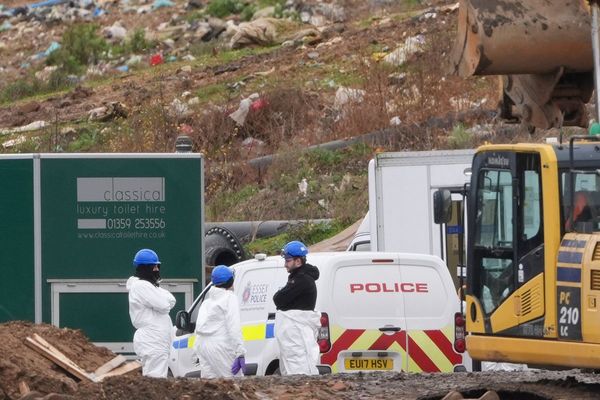WASHINGTON _ Rising temperatures that are contributing to wildfires and droughts are also changing the world's soil so that it pumps out more carbon dioxide, a "feedback loop" that could aggravate climate change, according to a study published Wednesday in the journal Nature.
Increased heat is activating microbes in the soil, converting organic matter into carbon dioxide at a heightened rate, much like a compost heap that decomposes quickly when exposed to a lengthy heat wave.
Scientists say this feedback loop has implications for understanding the build-up of greenhouse gases in the atmosphere. In the past, many researchers assumed that increased carbon dioxide would trigger a boost in growth of forests and vegetation that would capture carbon and counteract impacts of more rapid soil decay.
This week's study casts doubt on that theory.
"One thing we show here is not only a higher rate of respiration from the soil, but it is rising relative to the growth of vegetation," said Ben Bond-Lamberty, the study's lead author and a forest ecologist at the Pacific Northwest National Laboratory, a U.S. Department of Energy facility in Richland, Wash.
Numerous scientists say the atmospheric buildup of carbon dioxide, primarily from industrial emissions, is a prime driver of recent record-hot conditions that have contributed to deadly wildfires, from Northern California to Greece. Charting future impacts not only involves tracking man-made emissions but understanding how ecosystems absorb carbon and are affected by warming temperatures.
Forests and grasslands are obvious reservoirs of carbon, but the planet's soils are actually larger storehouses _ unseen and out of mind. These soils include a mix of living roots and decaying layers of leaves, twigs and other matter, their decomposition affected by temperature, amounts of available oxygen and the work of bacteria, fungi and other microbes.
Scientists have long known that certain soils worldwide were increasing outputs of carbon dioxide, but this week's study is the first to synthesize all of that research and provide a global estimate of the increase. The Nature study _ a product of the Joint Global Change Research Institute, a partnership between the University of Maryland and the Pacific Northwest laboratory _ found that conversion of soil carbon to carbon dioxide has increased 1.2 percent worldwide over a quarter century, from 1990 through 2014.
While 1.2 percent may not sound like a significant increase, soil respiration worldwide emits about five times more carbon dioxide than human activities, said Bond-Lamberty. So "a small percentage of a large number is still a very large number," he said.
The paper's authors relied upon a database that drew from 1,500 soil respiration studies worldwide, as well as data from FLUXNET, an international network of sites that monitor the interactions of carbon from land to air. The research was funded by DOE's Office of Science.
"This study asks the question on a global scale," said Vanessa Bailey, a soil scientist at the Pacific Northwest laboratory who contributed to the research. "We are talking about a huge quantity of carbon."
Not all that carbon is the same. Some of it is new, the product of recently fallen leaves and other vegetation. Some of it has built up over time, ancient and sequestered.
"Imagine a compost bin that you don't turn over completely," said Bond-Lamberty. "You end up with some bottom layers where decomposition doesn't happen. Then, all of a sudden one summer, the temperature spikes and some of those long-stored layers will get decomposed."
Numerous scientists worldwide are studying climate change impact on soils, from the Arctic tundra to the loose layers of the tropics. At least one study has suggested that supercharged microbes are robbing nutrients from the soil, which could ultimately stunt the growth of vegetation. These studies contradict the claims of climate change doubters who say that industrial increases of CO2 are "greening the planet," benefiting humankind with faster-growing crops and vegetation.
In a blog post last year, the Competitive Enterprise Institute, which has received funding from fossil fuel industries, celebrated a study that documented how plants have increased their uptake of carbon, because of increased CO2 emissions. "So-called carbon pollution has done much more to expand and invigorate the planet's greenery than all the climate policies of all the world's governments combined," wrote a senior fellow for the think tank.
Bond-Lamberty and his co-authors acknowledge that uncertainties remain about carbon emissions from soil, including how emissions vary around the globe, as well as the shortage of data from the poles and the tropics. While their study documents soil emissions rising faster than what global vegetation is absorbing, that finding is likely to be scrutinized.
"Our result does not square well with a number of other studies suggesting the land is a really robust carbon sink," he said. "So the question is: Are those studies overestimating the strength of the land carbon sink? Or are the studies we used not representative of what is happening globally? How do we reconcile that?"







